The Otterspool area was once the home of fishermen, and of dissident Puritans (who named the little stream “River Jordan” and the lane “Jericho”). Later, a wealthy merchant built a snuff mill near the shore and a large house for himself. It was demolished in 1931 and all that remains are the gateposts and carriage drive.
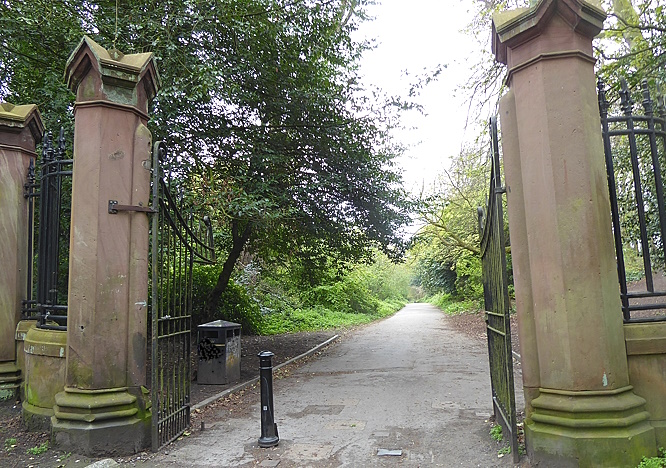
We took the new Woodland Walk path, which climbs the right-hand bank and winds through Beech and Hornbeam, Sycamore and Norway Maple. Someone has been planting (Spanish) Bluebells, Daffodils and Narcissi. In this sheltered valley we saw our first Horse Chestnut flowers and the first May blossom. All the new leaves are a delicate green.
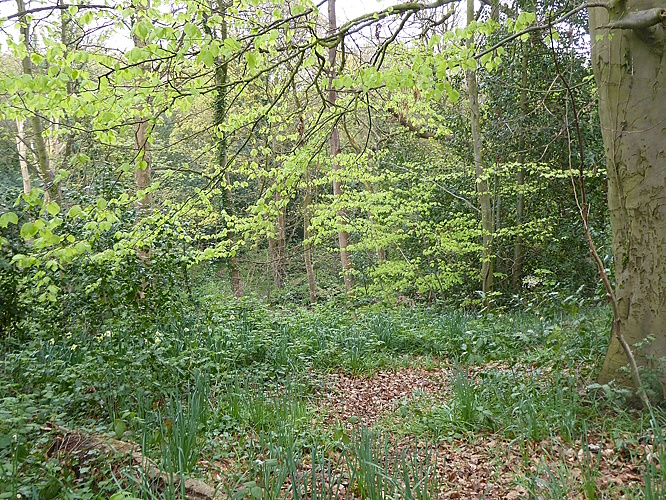
A Nuthatch was dodging about in the tree branches and we heard Great Tits and Blackbirds. A Jay flew over. At the base of one tree were some small excavated holes which we think were made by mining bees. They weren’t quite as big as bumble bee nest holes, the width of a pencil rather than a finger. Unfortunately we didn’t see any of the residents, and since there are over 60 species of mining bees in the UK we can’t even guess who made them.

The woods aren’t completely native. The carriage drive must once have been lined with specimen trees. There is some kind of Redwood, a tall thin conifer, and a magnificent pair of Cut-leaved Beeches flanking the path. On the corner by the railway bridge we noted a small tree that we couldn’t identify. It had masses of small hanging buds, and what looked like black fruits or empty seed cases from last year, all turned up like little chandeliers. The good folks on the Facebook group Trees of Britain and Ireland promptly named it as the shrub Enkianthus campanulatus known as Red Vein Enkianthus. It is native to the open woodlands of Japan. Those little buds will become pink bells, and it has wonderful autumn colour, they say. Interestingly, there is a Persian Ironwood immediately opposite it, a tree also famed for its autumn display, so this is clearly a planned pairing.
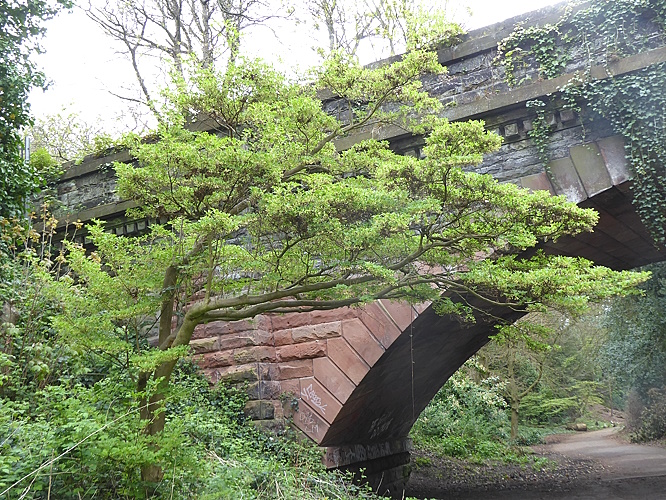
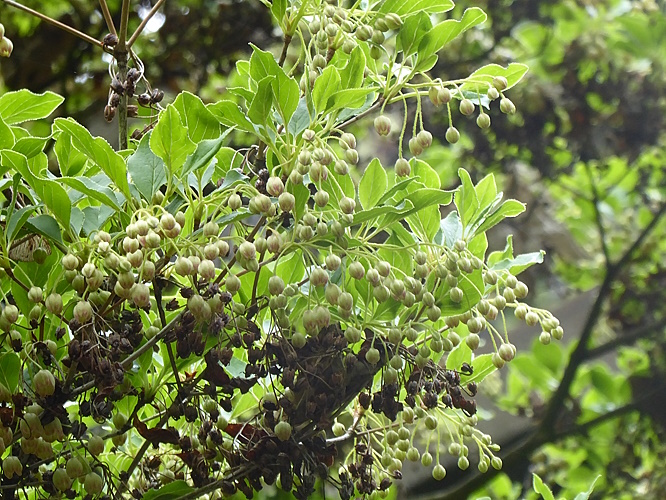
We emerged from the woods near the skatepark. There are newly-planted trees on the lawn there, some still with their nursery labels. Two were Weeping White Mulberries, there were some lovely cut-leaved birches and multi-stemmed Hazels, one a purple variety. These are unusual plantings for a busy public park.
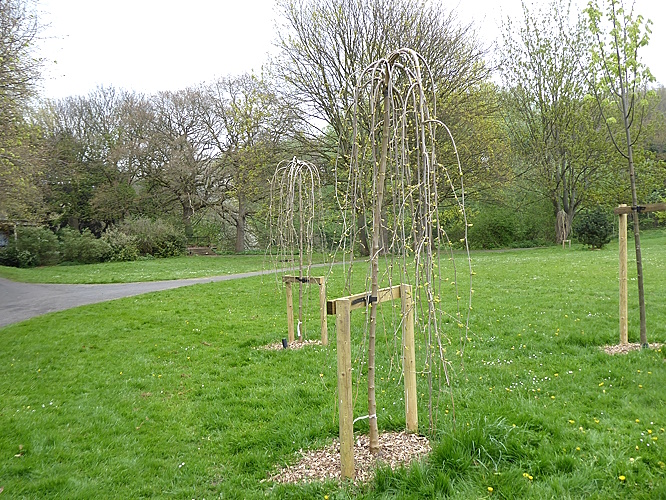
Nearby was a sign calling it The Otterspool Orchard and saying that it is part of an Urban GreenUP research project on climate change. They also mention one of the plantings was a pecan, a rare tree we have also recently seen planted in Calderstones Park. Is that part of the same experiment? Whatever is produced is free to harvest in any case.
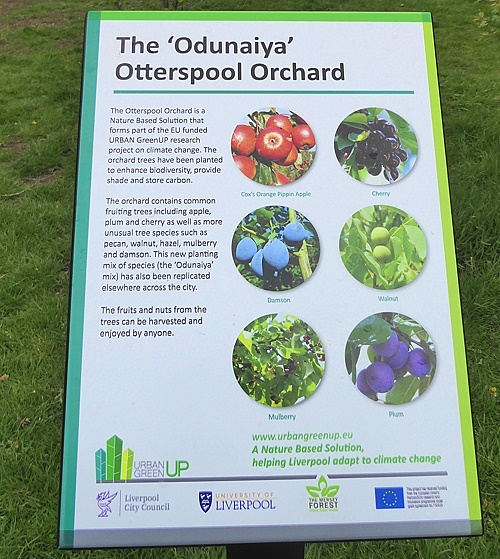
We lunched overlooking the river, watching a group of yachts with colourful sails.
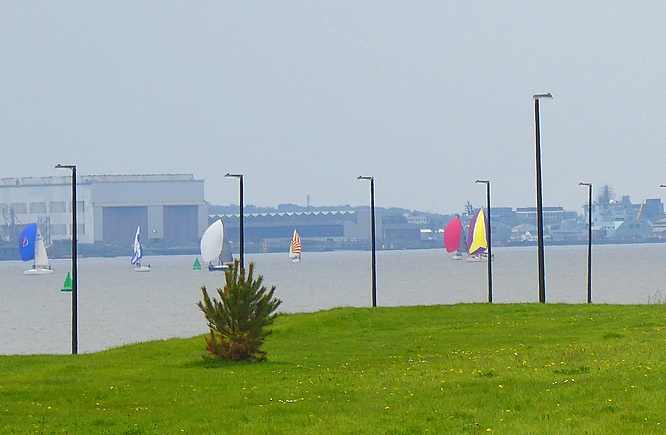
With dark clouds threatening we returned along the path on the south side of the carriage drive, designated a Nature Reserve. There were lots of wild flowers out including Wild Garlic, the first Cow Parsley, Garlic Mustard, White Dead-nettle and Marsh Marigolds on the banks of the Water Retention Ponds.


We also admired many of the tree flowers, Hornbeam, Cut-leaved Beech, and thickly growing Elm seeds. The books are never very clear about how to distinguish English Elm from Wych Elm by the position of the seed in the wing, but this is very probably Wych Elm because of the abundance of the seeds, and the unlikelihood of an English Elm of that size surviving to flower and fruit so copiously.
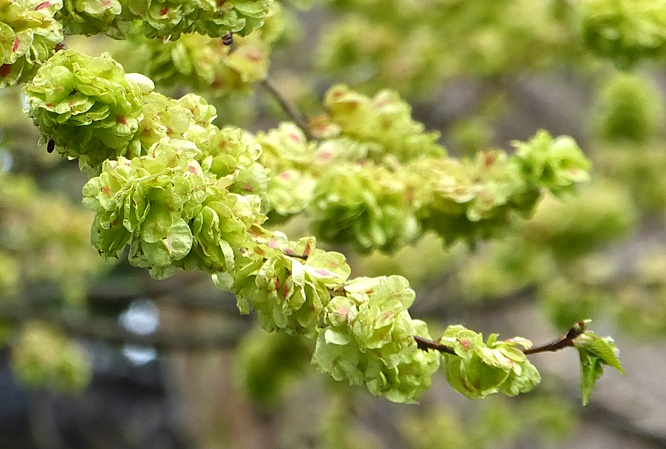
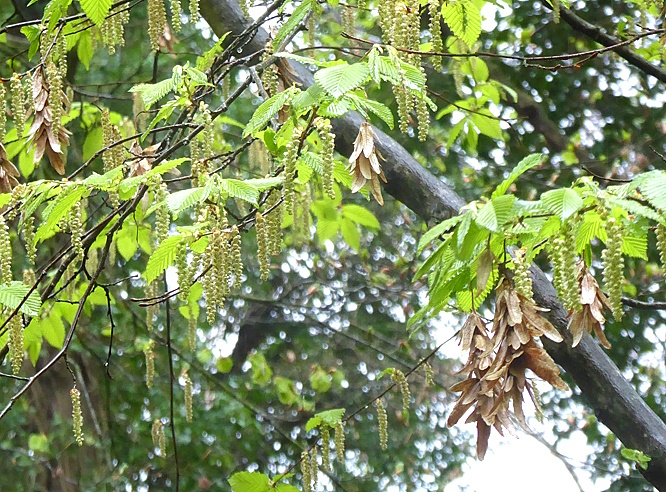
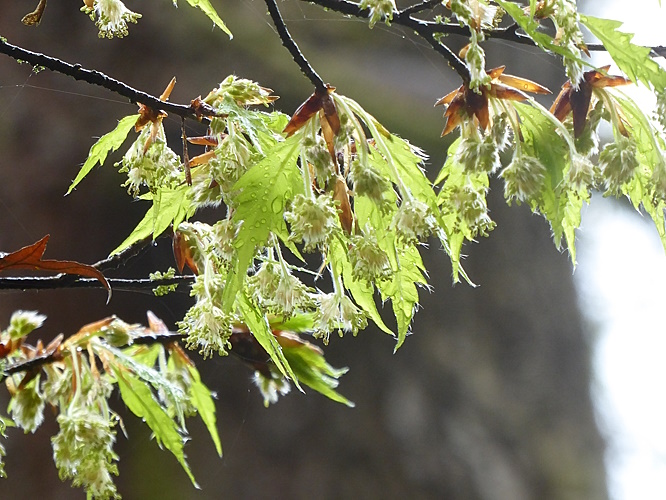
Public transport details: Bus 82 from Elliot Street at 9.55, arriving Aigburth Road / Lisburn Road at 10.15. Returned from Aigburth Road / Jericho Lane on the 82 at 2.05, arriving city centre 2.25.
